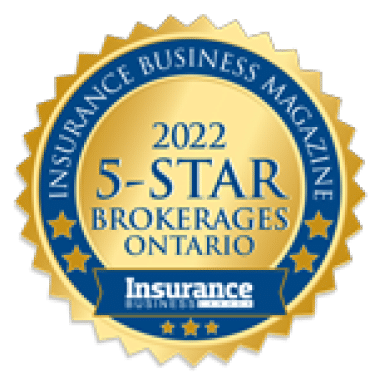Errors and Omissions (E&O) insurance is crucial for professionals who want to protect themselves from potential claims. This insurance helps cover the costs associated with lawsuits or claims made against your professional services. If you provide advice or services to clients, E&O insurance can give you peace of mind.
However, not all E&O insurance policies are the same. It’s essential to know what to look for when choosing a policy that fits your needs. By understanding the key elements of an E&O insurance policy, you can make an informed decision. This article will help you identify the important aspects to consider.
Knowing what to look for in an E&O insurance policy protects you adequately. This way, you can focus on your work without worrying about unexpected liabilities. We’ll cover different aspects such as coverage inclusions and exclusions, policy limits, the claims process, and cost considerations. These factors will help you select the best policy for your professional needs.
Coverage Inclusions and Exclusions
When evaluating an E&O insurance policy, understanding what is included and excluded is crucial. Coverage inclusions refer to the specific incidents and claims that the policy will cover. For instance, many E&O policies cover errors in professional advice, negligence, and misrepresentation. These inclusions can protect against lawsuits claiming the professional services you provided caused financial loss to a client.
Common inclusions in E&O insurance policies often cover:
- Negligence: Mistakes or oversights that cause harm to a client.
- Misrepresentation: Providing false or misleading information.
- Errors in professional advice: Incorrect guidance that leads to a client’s financial loss.
On the other hand, exclusions are the incidents or claims the policy does not cover. These might include intentional wrongdoing, criminal acts, or general liability claims. Knowing these exclusions ahead of time helps you manage risks better and avoid unpleasant surprises when you need to file a claim.
Typical exclusions in E&O insurance policies often include:
- Intentional misconduct: Deliberate acts causing harm.
- General liability: Damage to property or bodily injury not related to professional services.
- Criminal acts: Any illegal activity leading to claims.
Policy Limits and Deductibles
Policy limits and deductibles are essential factors when choosing an E&O insurance policy. The policy limit is the maximum amount the insurance will pay for a covered claim. Understanding your policy’s limits ensures you have enough coverage to protect you in worst-case scenarios. There are usually two types of limits: per-claim limits and aggregate limits. The per-claim limit is the maximum amount paid for any single claim, while the aggregate limit is the total amount paid for all claims within the policy period.
When reviewing policy limits, consider:
- Per-claim limit: Maximum payout for a single claim.
- Aggregate limit: Total maximum payout during the policy term.
In addition to limits, deductibles play a significant role in your E&O insurance policy. A deductible is the amount you must pay out-of-pocket before the insurance coverage kicks in. Higher deductibles usually lower the premium but mean more out-of-pocket costs when a claim arises. On the other hand, lower deductibles lead to higher premiums but reduce your initial financial burden when making a claim.
Consider these aspects of deductibles:
- Higher deductibles: Lower premiums but more out-of-pocket expenses.
- Lower deductibles: Higher premiums but less to pay when filing a claim.
Balancing policy limits and deductibles ensures sufficient coverage without stretching your budget too thin.
Claims Process and Response Time
The claims process and response time are vital aspects of an E&O insurance policy. Knowing how to file a claim and understanding the insurer’s response time can significantly impact your experience during a stressful situation. An efficient claims process ensures you can resume normal operations quickly without financial strain.
When evaluating the claims process, consider these key points:
- Simplicity: Ensure the process is straightforward and user-friendly.
- Documentation: Know what documents you need to file a claim.
- Support: Check if the insurer offers 24/7 customer support for claims.
- Response time is equally important. A swift response from your insurer can help mitigate damages and reduce stress. Some policies outline specific time frames for the insurer to respond to a filed claim. Be sure to understand these timelines to set proper expectations.
Look for these in response times:
- Initial Response: How quickly the insurer acknowledges your claim.
- Resolution Time: The average time to settle a claim fully.
By understanding the claims process and response time, you can choose an E&O insurance policy that supports you efficiently when needed.
Cost and Value Considerations
Cost and value considerations play a significant role in selecting an E&O insurance policy. While it’s essential to find a policy within your budget, it’s equally crucial to ensure you get good value for the money spent. Balancing cost with the level of coverage can help you make an informed decision.
When comparing costs, pay attention to:
- Premiums: The ongoing cost you pay for your insurance policy.
- Deductibles: The out-of-pocket expenses you must cover before insurance kicks in.
- Policy Limits: Ensure the limits are sufficient for your needs.
Value goes beyond just the cost. Assess the overall benefits provided by the policy. This includes customer service, the ease of filing claims, and any additional services that come with the policy. Sometimes, a slightly more expensive policy may offer better overall value due to superior support and faster claim processing.
Consider these value aspects:
- Customer Service: Availability and quality of service provided by the insurer.
- Additional Benefits: Look for extra coverages or services included in the policy.
- Reputation: The reliability and reputation of the insurance provider.
By carefully weighing cost and value, you can find an E&O insurance policy that provides comprehensive coverage without breaking the bank.
Conclusion
Selecting the right E&O insurance policy is crucial for protecting your professional practice. Understanding the key components such as coverage inclusions and exclusions, policy limits and deductibles, claims process and response time, and cost and value considerations can help you make an informed decision. Each of these factors plays a vital role in ensuring that you are adequately protected against potential claims and legal issues.
Moreover, knowing what to expect from your insurance can bring peace of mind. You can focus on your professional responsibilities without worrying about unforeseen liabilities. Remember that the cheapest option is not always the best; instead, look for a policy that offers the best value for your unique needs.
For advice on E&O insurance that best fits your professional requirements, contact Ai Insurance Organization Inc. Our licensed brokers are ready to help you find the most suitable coverage.
Disclaimer: The information provided in this article is intended for illustrative purposes only and should not be considered as actual insurance advice. Our articles offer insights and general guidance on various insurance topics; however, they do not substitute professional advice tailored to your specific circumstances. For expert, personalized insurance advice and solutions, please contact our licensed insurance brokers.












